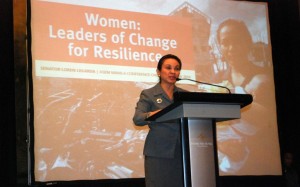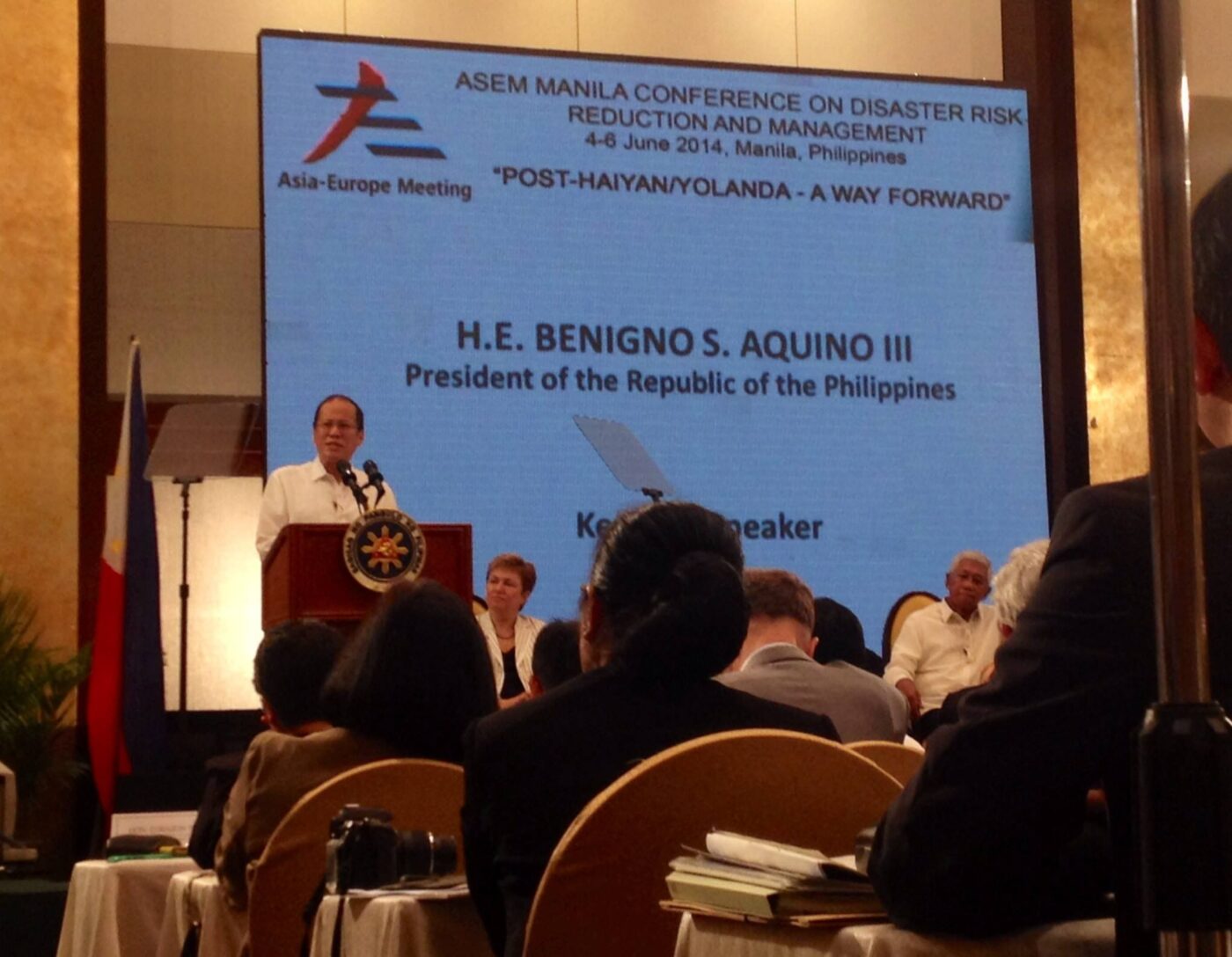THE CITY of Manila hosted the Asia-Europe Meeting’s (ASEM) Disaster Risk and Reduction Management (DRRM) conference on June 4 to 6. Around 280 government officials, academics, scientists and members of various organizations were present during the two-day conference.
The meeting culminated with the signing of the Tacloban Declaration, a document that aims to introduce “new elements to global discourse and [fill] in the gaps left by other DRRM platforms.” It contains new concepts and guidelines for DRRM that will be followed by the 36 participating countries.
The declaration is named after the city that was hit hardest by Super Typhoon Yolanda, known internationally as Haiyan. More than 6,000 died in the storm’s wake and over 1,000 people remain missing.
The Tacloban Declaration is set to replace the 2005 Hyogo Framework Action (HFA), which is set to expire next year, as the ASEM paradigm on DRRM. The HFA, organized by the United Nations Office for Disaster Risk Reduction, is a 10-year scheme on mitigating disaster risks.
Support structures
In one of its points, the Tacloban Declaration discusses the central role of national governments during large-scale disasters, but takes into account the role of local government units as first responders. It “[bears] in mind that resilience building starts at the local level” and highlights the importance of coordination between governments and private sectors.

GOVERNMENT SUPPORT. The newly signed Tacloban Declaration highlights the roles of national and local government units during natural disasters. (Photo from Lorenlegarda.com.ph)
The document also tackles the role of women in disaster preparedness. In her speech during the conference’s plenary session, Senator Loren Legarda said, “We need to capacitate women not only as primary caregivers in times of disaster and economic distress, but also as part of the overall strategy on disaster risk reduction and management. To empower women is to reduce their vulnerability to disasters.”
She pointed out that among the first responders in the aftermath of Yolanda were Filipino women doctors, paramedics and civilian volunteers. “Countless Filipino women responded with almost total disregard of their own safety, operating in what was traditionally viewed as the province of man,” Legarda added.
Another prominent point of the Tacloban Declaration was the affirmation of “the need to build back better during the recovery and reconstruction phases of disasters.”
Slow and incomplete progress
More than eight months since the disaster, post-Yolanda rehabilitation remains slow and incomplete.
“Distribution of relief is poor and slow, lacking coordination across all levels of involved players. There is a lack of clear direction and overall plan,” says Mara Gallmann, vice president for Environmental Affairs of the Ateneo Environmental Science Society. She adds that “the shelter sector seems to be the most problematic for all.”
More than 2.6 million survivors “remain at risk and without durable shelter,” according to a joint report by the government and Shelter Cluster, a global committee that coordinates shelter assistance.
With several limitations including no-build zones, hazard vulnerability and unclear land ownership, government officials project that it would take years for complete permanent relocation.
Public schools, particularly in the Eastern Visayas, are also at a disarray, with the latest report from the Department of Education spelling out the need for 2,313 new classrooms, while 17,757 are in need of repairs.
Continued external help
Despite the flaws in recovery coordination, help has been pouring in. Property developer Ayala Land, for one, has turned over 150 housing units and 300 rehabilitated fishing boats for survivors in Iloilo.
Under the Joint Task Force Pacific Partnership 2014, the armed forces of the Philippines, United States, Japan, Malaysia and South Korea have committed to the construction of buildings for two elementary schools and a hospital in Leyte. In addition, the United Nations has made a cheaper and more durable boat for fishermen in the affected areas and will deploy trained builders to assist in the project.
The Ateneo, through its Disaster Relief and Management (Dream) Team, continues to take part in rebuilding efforts and risk reduction. With the Simbahang Lingkod ng Bayan, the social justice arm of the Philippine Jesuits, the Dream Team is building multi-purpose halls that can alternate as evacuation centers in Palawan.
Starting at the local level
The need for external help, as well as alarming statistics of prevailing damage, have spelled out the need for DRRM.
Gallmann says “typhoons are natural destructive occurrences which we can’t prevent from happening. However, whether we will let such natural disasters create intensified damage will depend on how involved, prepared, informed and responsive communities are.”
Days after the declaration was written up, Legarda ended a keynote address in Beijing by saying, “I wish to [reiterate] our roles as builders, not just of communities of today, but communities of the future.”
She added, “We must not rebuild the risks. We must rebuild stronger and wiser.”




